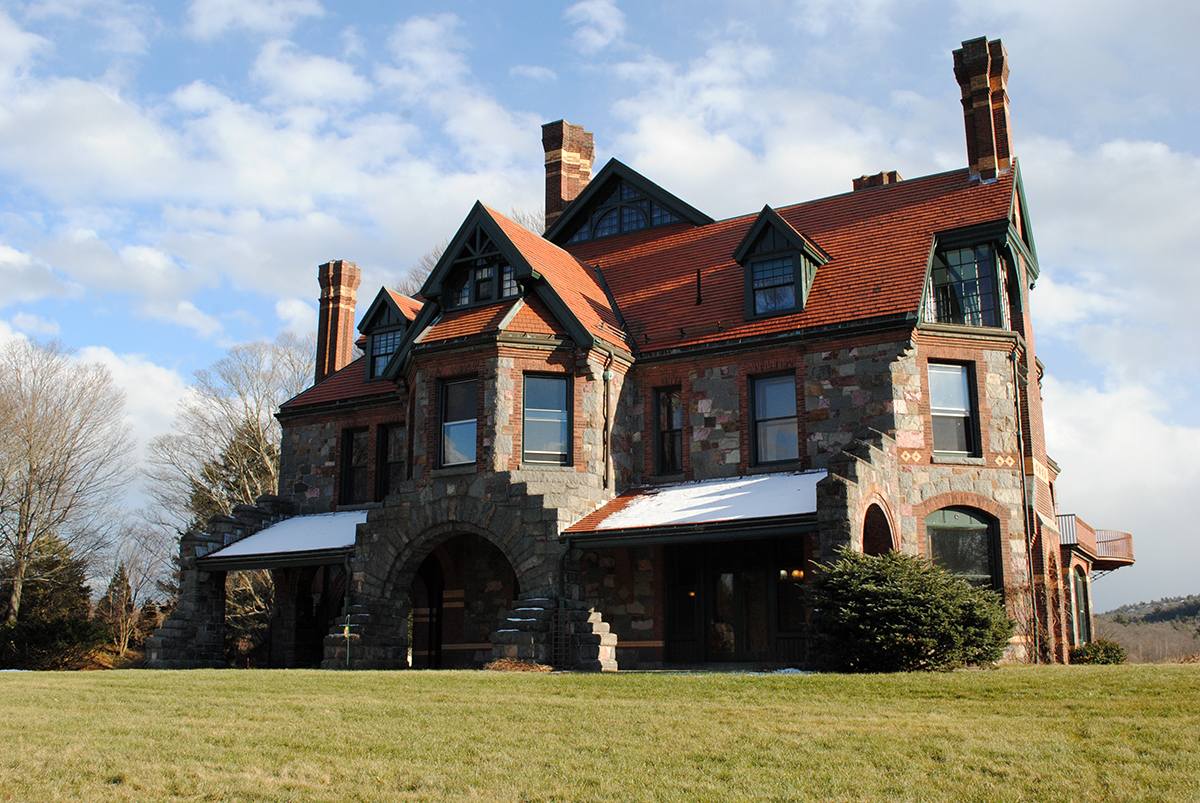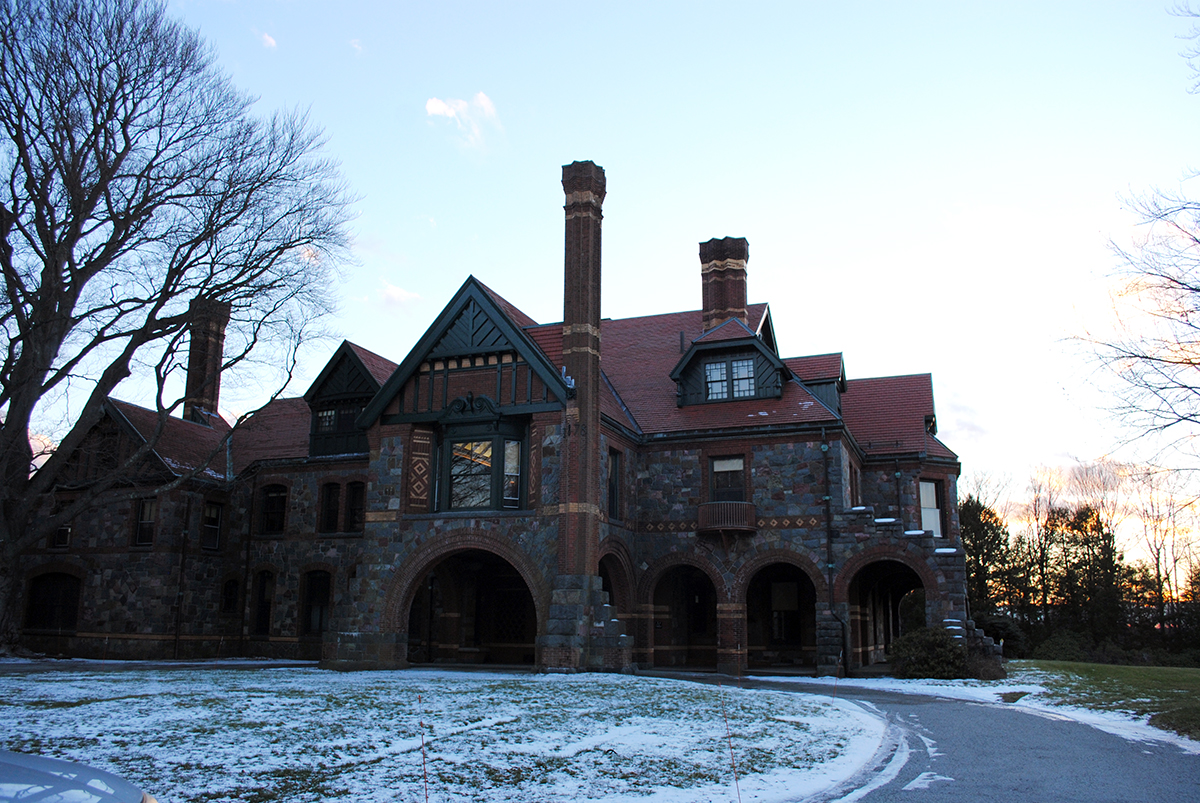A Historic Mansion in Milton Is Opening to the Public This Spring

Photo by Madeline Bilis
The stone mansion pictured above will soon be yours to explore.
Built in 1878 for two well-to-do newlyweds—mining engineer William Ellery Channing and heiress Edith Hemenway Eustis—the not-so-humble “starter home” is a rare survivor of the Aesthetic Movement, which supported the idea of creating something beautiful instead of making art with a deeper meaning. The late Victorian mansion was dreamed up by esteemed architect William Ralph Emerson, and this spring, it will become the only Emerson-designed building open to the public.
Called the Eustis Estate, the grand 18,600-square-foot house in Milton is surrounded by 80 acres of land abutting the Blue Hills Reservation. The property had been in the Eustis family for four generations before it was sold to preservation nonprofit Historic New England for almost $7.1 million in 2012. The Eustis family moved out of the house in 2014, then Historic New England got started on the necessary restoration work to transform the place into a museum. Come May, the newest addition to the nonprofit’s impressive roster of 37 house museums will open its doors.
Unlike many of the house museums across the region, you won’t have to slowly make your way through the manor on a guided tour. Shoe covers won’t be necessary, and docents won’t gently chide you with a “Please don’t touch that,” if you overstep your boundaries. Instead, you’ll have free roam of the mansion, with the ability to not just see, but touch and feel what’s in front of you.
“You can luxuriate to a certain degree in these spaces,” says Peter Gittleman, the team leader for visitor experience at the Eustis Estate. Visitors can walk into certain rooms, plunk down on a sofa, and learn about the house at their own speed.
“Visitors will be able to see the spaces as they were experienced by the Eustis family, and that’s new for us,” says Gittleman, adding that the setup is experimental for Historic New England.
This new approach makes the Eustis Estate the first house museum of its kind in the region. “We wanted to change the way we present historic sites,” explains Gittleman.
While guests will still have the option to take a guided tour, the primary visitor experience will be a self-guided tour. Tours will be orchestrated with wall-mounted iPads and kiosks throughout the museum, which will highlight the property’s architecture, design, family history, and landscape. There will also be designated spaces for rotating exhibitions, as well as a resource room for studying and researching.
Most museums aren’t able to adopt this experimental layout because of their fragile and historically significant contents. But when Historic New England purchased the Eustis Estate, most of the original furniture was not included in the sale. Instead, the organization identified historically accurate pieces from antique vendors and refurbished them. This is why visitors are allowed to sit on the sofas—the furniture is authentic to the time period and style of the house, but isn’t necessarily historically significant.
Before the furniture can be moved in, conservation experts will finish restoring the original (and richly dark) paint colors in several rooms, and preserving intricate woodwork and tile. The home’s woodwork, fireplaces, and stained glass windows are major highlights in its interior design.
See a sneak peak of these design elements in the museum in progress below.

Photo by Madeline Bilis

Photo by Madeline Bilis

Photo by Madeline Bilis

Photo by Madeline Bilis
The Eustis Estate Museum and Study Center, opening May 2017, historicnewengland.com.


